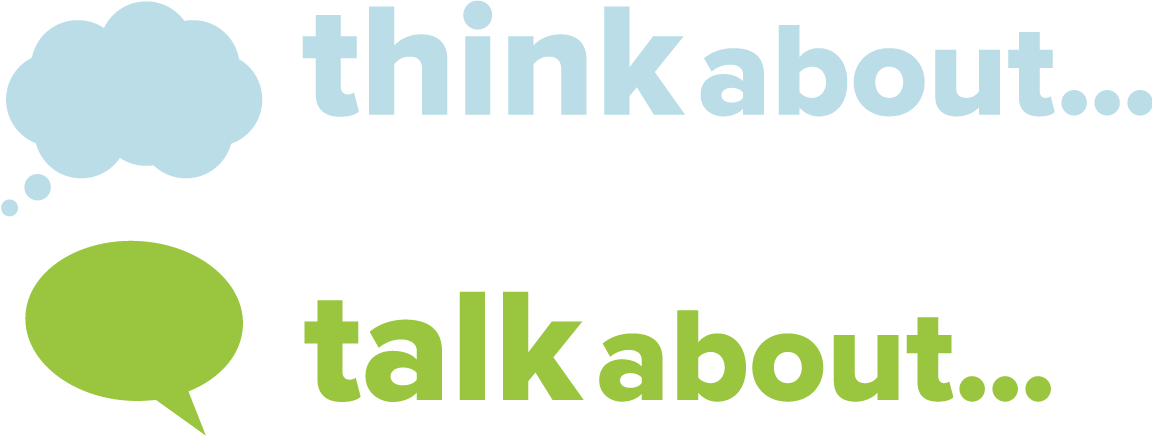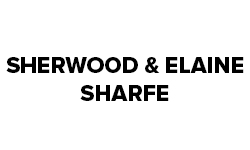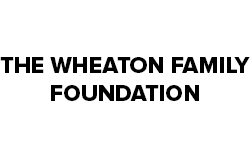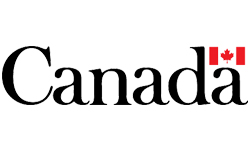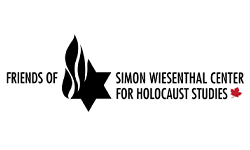Part B Learning Plan
Teacher Note
Guiding questions are suggested to support teachers as they explore the essential questions. Teachers are encouraged to use the questions that support their classroom work and make wording changes or add additional questions as required. Guiding questions are more closely related to the inquiry.
Students are always invited and encouraged to add their own questions for discovery.
- Learn what constitutes a society. (IN9.1)
- Explore various factors that can influence the development of a societal worldview. (IN9.2)
- Understand how worldview is expressed through history. (IN9.3)
- Identify key historical events. (DR9.2)
- Determine the influence of past societies on contemporary Canadian society. (DR9.4)
- Understand the concepts of power and authority and the ways in which governance was established. (PA9.1)
Questions to Guide Inquiry
Essential Questions: Guiding Questions
- What makes democracy work? How could democracy be improved?
- How does democracy affect you on a daily basis?
- Is democracy the fairest way to represent people?
- How is “fairness” determined in a democracy?
- Whose perspective is predominant?
- Do you think our democratic Canadian government is fair to all Canadians?
- Should/Can a democratic government be fair to its constituents?
- What is the relationship between rights and responsibilities?
- What rights do you have and what responsibilities do those rights create?
- What responsibilities does living in a democracy create?
- What responsibility do you have to balance personal needs with community needs?
Why do we choose to live together in groups with rules?
Questions that hook
- What is a society?
- Why do people create/organize themselves into societies?
- What does a society have to have in order to be termed a society?
- Are societies unique?
- Are societies equal?
- Who decides how a society will function?
- Are societies democratic?
- What is the relationship between a society and common good?
- Have societies always existed?
Surface students’ thinking on the questions posed here. Capture their thinking for later reflection.
- Develop a definition of society that identifies the characteristics, roles, and function of a society.
- Using the graphic organizer, from the appendix, brainstorm and research the institutions and important people within the student’s community and society. This will included First Nations communities.
- Surface students’ understanding of the functions, roles, and responsibilities within those institutions to society.
- Chart for later reflection. Do these institutions fulfill the criteria/characteristics identified for successful societal functioning? What do they add to the role and functions of current societal structures? Adjust the original definition if necessary.
CONNECT TO TOPIC AND SURFACE STUDENTS’ THINKING ABOUT …
This inquiry leads students to think about present day reasons as to why we organize ourselves in societies and then move to explore and consider the same concepts in historical communities.
See appendix for graphic organizer: How Societies Structure Themselves to support student research. Complete as a class, then complete for ancient society study.
What constitutes a society? (IN9.1)
How is societal worldview reflected in the things a society values? (IN9.2 IN9.3)
Historical civilizations include:
- Macedonia
- Rome
- England
- Spain
- France
- Mongolia
Historical Indigenous civilizations include:
- One Indigenous civilization of North America
- Mesopotamia or Ancient Egypt
- Ancient Greece or Rome;
- Aztec, Incan, or Mayan civilizations
- Medieval Europe or Renaissance Europe
- Ancient China or Japan
Connect back to the inquiry questions:
- Why do we choose to live together in groups with rules? Have we always done that?
- What constitutes a society?
- What are the criteria needed for a civilization to call itself a society?
- What does a society have to have to be called a society?/What constitutes a society?
- Which of the civilizations studied would be termed a society? Defend your thinking.
- Why wouldn’t all communities be included?
- What were the strengths of your community?
- What areas could have been improved?
These questions offer students an opportunity to consider how ethnocentrism impacted the understanding and acceptance of different societies, especially the societies of indigenous people.
- Have societies always existed?
- Are societies unique?
- Are societies equal?
- Who decides how a society will function?
- Are societies democratic?
- What is the relationship between a society and common good?
- Why do you suppose some civilizations were considered societies while others were not?
DEVELOPING UNDERSTANDING
- How do diverse worldviews impact the acceptance of societal rules?
Brainstorm ways that your worldview is shown by your everyday life – activities, hobbies, choice of clothing, music, food.
Linking beliefs to worldview
- Review and clarify students’ concept of a worldview. In groups or in a circle have them reflect on their personal beliefs, which frame their worldviews, about some contemporary issues or problems:
- making friends;
- affordable housing;
- education, K-12 and post-secondary;
- intergenerational families;
- role of children, elders/seniors;
- participating in religious or cultural ceremonies;
- healthy food choices;
- the role of technology in daily life;
- drinking and driving;
- violence
- global warming;
- designer clothing;
- other- look for additional community issues for which students have opinions i.e. recycling, etc.
Chart their thinking and look for themes.
- What are the commonalities? What accounts for the differences?
- What worldviews are evident?
- How do these factors affect your community/Canadian society?
- What is their thinking saying about what they believe? /Their worldview?
- How might someone from another country, culture describe the worldview of the students?
- Is Canada’s multiculturalism reflected in the worldview of the students?
If your classroom does not have a wide diversity of student worldviews, consider expanding the questions to include the community or the province to incorporate greater diversity.
Students also do a worldview reflection in the Lifelong Learning Citizen inquiries when they study Malala Yousafzai.
Research to find links between practices of historical civilizations that demonstrated beliefs and worldview.
- Interview someone from those cultures asking for their thoughts on the same issues students explored as a group;
- Have a panel of invited guests to speak to the class;
- Invite representatives from cultures within the community to share their views; or, (Could do this using an inside/outside circle strategy).
- Host a knowledge exchange.
Note similarities and differences between students’ thinking and those of the people sharing their thoughts. What might be some of the reasons for the differences? Have students hypothesize about the reasons underlying the similarities and differences between the worldview of one individual and that of another person and look for themes. Possible reasons or themes might be:
- Time and place, culture, language, religion, gender identity, socio-economic situation and education.
- Can these personal beliefs be summarized into specific worldviews?
- Are worldviews reflective of specific cultures?
- What is the impact of history on worldview?
- How long have the various cultures held these worldviews?
- Go back to your historical civilization studied. Identify and consider:
- the attributes of leaders
- the roles of various individuals within communities
- cultural traditions and ceremonies
- means of sustenance
- family structures
- educational structures
- caring for the marginalized
- Give a summary statement about the worldview as identified in the beliefs and actions of the community.
- Identify similarities to your current society. What accounts for the differences?
APPLY AND EXTEND KNOWLEDGE
- In Canada and identified historical cultures show how worldview is communicated and reflected in the following:
- literature,
- the arts,
- cultural celebrations and traditions,
- education (including Elder’s teachings if indigenous peoples)
- sports and recreation,
- architecture
- fashion
- What role does education play in perpetuating the worldview?
- Give a summary statement identifying the worldview of the society studied.
Divide class into groups and have each group follow-up on their civilization of study. Each group must find out the information in the questions posed. Encourage students to present information learned in a variety of modes including speaking, writing, drama, multimedia, or other modes so that all students have an entrance point for demonstrating their learning and understanding.
CONNECT TO TOPIC AND SURFACE STUDENTS’ THINKING ABOUT …
Teacher note
Teachers may choose to select specific historical events to research. Check out these websites:
- http://canadaonline.about.com/od/history/u/canadianhistory.htm
- http://globalnews.ca/news/1420149/timeline-notable-dates-in-the-history-of-canada/
- http://hrsbstaff.ednet.ns.ca/smileymi/Canadian%20History%2011%20Revised/Craft%20of%20History/Top%2010%20Events%20in%20Canadian%20History.htm (link no longer active)
What is the impact of history on the development of Contemporary Canada? Current society? (DR9.2)
In preparation for the brainstorming activity have students interview family members to find out which historical events they remember and why.
With the class brainstorm…
What historical events do students remember?
- List events and identify why they remember.
- Categorize events identifying kind of historical event and impact.
Compare student events against family events. Why do differences exist?
- What are the key historical events in the country’s/civilization’s development? Represent in a timeline.
- Identify event and factors that allowed event to happen.
- What was the impact of that event on the development of the identified society?
- historical impacts
- current impacts
- Have students decide which events are most significant to the development of Canada and defend their thinking.
- Design a human timeline where students speak out sharing an important dateline of a key historical event.
- What were the key events and who were the key people involved in the development of Canadian society?
- How does the historical event impact you today?
- Which members of a society have a voice in decision-making? What role does age play in decision-making?
Evaluate the authenticity and validity of information sources used in the inquiry.
Graphic organizers are available in the appendix to support student research.
What is the influence of societies of the past on contemporary life in Canada? (DR9.4)
Using the graphic organizer, have students identify the ideas, images, and symbols in contemporary life that have their roots in societies of the past?
After researching your historical civilization…
- What were the key events and who were the key people involved in the development of your historical society?
- What categories are recurring?
- How does the history of your society impact you today?
- Which members of the society had a voice in decision-making? What role does age play in decision-making?
- What circumstances allowed the event to occur?
What are the similarities to critical Canadian events? What themes are arising?
Historical
- What has been the impact on contemporary society of these historical events?
- the decline of the Roman Empire;
- the attempted annihilation of Indigenous cultures and languages,
- the power in the organization of large corporations;
- the contribution of Indigenous peoples to the survival of newcomers at the time of contact, and
- the willingness to share the bounty and abundance of the land, sometimes through sophisticated arrangements known as treaties.
First Nations Influence
- What connections can you make between traditional and oral histories and cultural identity?
- What is the impact of traditional narratives on contemporary society?
DEVELOPING UNDERSTANDING
In this part of the inquiry students compare differing forms of governance to consider the influence on the present.
(See Governance Comparisons graphic organizer in appendix)
How have the concepts and roles of power and authority been demonstrated in the history of governance? What are their impacts on Canada today? (PA9.1)
Questions that hook:
- Which is more effective, power or authority?
- Who is the boss of you? Who has authority over you?
- How have the roles of power and authority changed from ancient times to today?
“Canada is founded upon principles that recognize the supremacy of God and the rule of law.”
- What does this mean to students?
- Surface and record student thinking.
Using the jigsaw study process have students investigate the significant historical events studied and within their chosen country (Be sure to consider Indigenous and non-Indigenous civilizations)
Identify:
- The systems of government in place at different periods in the history of the societies studied.
- Who had power?
- How government leaders obtained and maintained power?
- e.
- Iroquois chiefs chosen by clan mothers,
- European leaders selected by elite males
- Explain the reasons for the existence of a particular system of government at the specific moment in history of the societies studied.
- Differentiate the essential characteristics of the system of governments identifying whether they were:
- democracy
- consensus,
- monarchy
- autocracy
- military regime
- What was the effect of the system of government on the worldview of the societies studied?
- What was the effect of the development of the rule of law on the worldview of society studied?
- What have been the impacts of the governance models ie. distribution of power and the application of authority in the studied society, on contemporary Canadian society?
- What were some of the most significant effects on Canada’s development of the rule of law?
APPLY AND EXTEND KNOWLEDGE
- Why are there sports teams named after First Nation names?
- Is it appropriate to use symbols or logos from another ones culture?
- What do you think of spiritual connections to cultural connections?
Resources to support students’ study or stimulate thinking
- National Museum of the American Indian Winter 2013- “A Tribe Called Red”
http://www.americanindianmagazine.org/story/tribe-called-red
The group sent a message,
“Non-Natives who come to our shows, please don’t wear headdresses or war paint. It’s making fun of our race and culture and is extremely insulting and demeaning. Please stop”.
- Alaora Arnold. Urban Native Magazine “Decolonizing the Mind” Coachella.
“Westernized culture has created a feeling of entitlement and the ability to blatantly take from other cultures. When entering these discussions about cultural appropriation it proves helpful to make efforts to “decolonize the mind”. – See more at: http://urbannativemag.com/decolonize-the-mind-coachella/#sthash.fch6QUdU.dpuf
- Megan RedShirt-Shaw. CBC News Pharrel William: Please Think Before you put on a headdress. http://www.cbc.ca/news/aboriginal/pharrell-williams-please-think-before-you-put-on-a-headdress-1.2667315
“Each feather was earned. The significance of eagle feathers is still honoured today in contemporary indigenous culture and the war bonnet specifically is not definitive of all Native American people today. Every community practices their own belief system.”
“Symbols like the headdress are owned by the tribes. They are sacred to our communities. It is hurtful to see them used in any other way”.
EVIDENCE OF LEARNING
Students should be able demonstrate an understanding of:
- What constitutes a society?
- How the factors such as time, place, culture, language, religion, gender identity, socio-economic situation and education shape an individual’s worldview.
- The influence that significant past events influence contemporary society.
Self-Assessment/Reflection
- What you think is more effective “power” or “authority” in the governance of a society. Explain your thinking.
- What is the balance between freedom and order in a society?
- How do we decide what is needed both individually and as a society?
- Whose perspective is most often represented in establishing societal norms? How would you include other perspectives?
- What is the most important contribution of historical societies on present day Canada? Explain your thinking.
STUDENT CITIZENSHIP JOURNAL OPPORTUNITIES
Students are keeping a Citizenship Journal to reflect upon their developing views of citizenship. This section provides prompts for student journals. Students are invited to choose one that interests them or propose their own. Students can also respond to any of the essential questions.
Students are encouraged to respond using a variety of genres.
- What do you think is more effective “power” or “authority” in the governance of a society?
- What is the balance between freedom and order in a society?
- How do we decide what is needed both individually and as a society
- Respond to any of the essential questions
© 2024 Concentus Citizenship Education Foundation Inc. All Rights Reserved.

